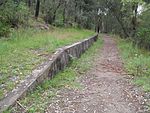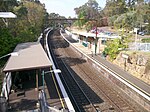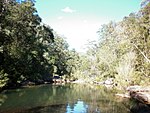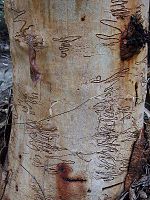Lapstone Zig Zag
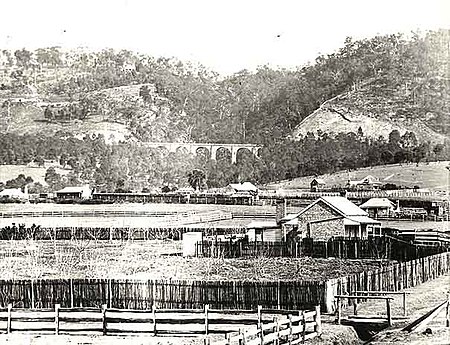
The Lapstone Zig Zag was a zig zag railway built between Emu Plains and Blaxland stations on the Main Western Line of New South Wales in Australia. Constructed between 1863 and 1865 to overcome an otherwise insurmountable climb up the eastern side of the Blue Mountains, the zig zag and associated Knapsack Viaduct, a sandstone arch viaduct, were designed by John Whitton, Engineer-in-Charge of New South Wales Government Railways, and were built by William Watkins. The zig zag was listed on the Blue Mountains local government heritage register on 27 December 1991; while the adjacent Knapsack Viaduct was listed on the New South Wales Heritage Database on 2 April 1999. The Lapstone Zig Zag was the world-first Zig Zag constructed on any main-line railway.The ruling grade was already very steep at 1 in 33 (3%). Another of the early plans had been to build the whole line across the Blue Mountains on a completely different route through the Grose Valley with a 3-kilometre-long (1.9 mi) tunnel, but this was beyond the resources of the colony of New South Wales at the time. The track included the Knapsack Viaduct and the subsequently abandoned Lucasville station, opened in 1877.The zig zag closed in 1892 when the Main Western line was diverted via the Glenbrook Deviation and subsequently sections of the line were repurposed as the Great Western Highway, and later use as a walking track.
Excerpt from the Wikipedia article Lapstone Zig Zag (License: CC BY-SA 3.0, Authors, Images).Lapstone Zig Zag
Lapstone Zig-Zag Walking Track, Sydney
Geographical coordinates (GPS) Address Nearby Places Show on map
Geographical coordinates (GPS)
| Latitude | Longitude |
|---|---|
| N -33.764569 ° | E 150.639411 ° |
Address
Lapstone Zig-Zag Walking Track
Lapstone Zig-Zag Walking Track
2773 Sydney
New South Wales, Australia
Open on Google Maps
